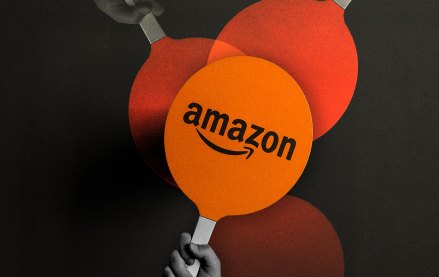Join us Dec. 1-3 in New Orleans for the Digiday Programmatic Marketing Summit
Q&A: Amid budget scrutiny, marketers are driving growth through programmatic CTV

Marketers are under increasing pressure to deliver better business outcomes, even as they face budget shortfalls and shrinking teams. These circumstances make it imperative for teams to maximize their spending.
One way marketers are addressing these challenges is through programmatic CTV, which is emerging as an essential channel for achieving more efficient, targeted and measurable outcomes.
In this Q&A with Blockboard CEO Matt Wasserlauf, he discussed how marketers are driving growth through smarter, more accountable programmatic buys on CTV. As belts tighten, the value of programmatic CTV lies in helping advertisers reach the right audiences, prove performance and optimize spending in real time — all while maintaining the premium, high-attention environment of the TV screen.
Many advertisers are under pressure to do more with less. How can programmatic CTV help advertisers make smarter media buys without sacrificing scale or outcomes?
Matt Wasserlauf: Doing more with less is where the market is going — and both advertisers and consumers are engaging with CTV to optimize their investments.
Customers are increasingly signing on to their favorite CTV providers, whether it be Hulu, Netflix or Paramount Plus. Live sports are also driving CTV engagement with more and more live sports being aired on platforms like Amazon Prime and Apple TV. So that’s where the hockey puck is going. We’ve got to skate to the puck. CTV is where it’s at, and it works across every industry and vertical.
For CTV, the whole business has become programmatic, which is a fancy word for automation. Humans are no longer on the dials; they’re not pulling the levers. But we’ve let this automation really run amok, and we have not minded the camp, which is why a good portion of these impressions are being viewed by fake bots. And that’s where the ad fraud and waste happen.
So when you reach human beings, you eliminate the waste. I know for a lot of folks in the market, that’s not an easy thing to do, but there are solutions out there, and that’s the simple answer to scale and outcomes: reach human beings.
We have to recalibrate and reset the marketplace. Programmatic is still a very efficient means of reaching your customers, and when done right, it can result in unbelievable outcomes and optimal performance.
Speaking of performance, how are advertisers using granular data to target specific, high-value audiences?
Matt Wasserlauf: Ultimately, CTV is digital, and now that TV is becoming digital, we have the full-funnel opportunity with CTV like never before. It’s all about driving through CTV and then using the data to retarget those customers.
Really, retargeting is the key now, and we’ve done that really well at Blockboard. In fact, we’re helping brands find people at the top of the funnel on premium CTV. We know who they are, and then we can retarget them and drive them to convert. That’s how CTV works.
Programmatic CTV aims to deliver both scale and performance, but what kind of outcomes can advertisers expect when they focus on reaching real audiences?
Matt Wasserlauf: Programmatic CTV is bringing the efficiency of automation and programmatic to the most powerful medium on Earth: TV. It’s going to change the entire advertising game. And there is a huge difference in performance when you’re driving reach and frequency to real people, which impacts campaign outcomes and secondary KPIs.
For big brands, if the first priority is reach and frequency, a secondary KPI tends to be leads, sales, store visits or other engagement metrics. There is a host of secondary metrics, and for those brands, that’s where we excel — performance beyond reach and frequency.
For example, we worked with Dexcom, a diabetic treatment. Dexcom had a problem and wasn’t reaching or driving leads for its diabetic patch. The incumbent technology vendor and the agency weren’t able to get under a cost of $8,000 per qualified lead. Blockboard immediately got the cost down to $2,000 and helped the agency save the account. What we did in the two years ensuing is we drove that $2,000 down to $750 per qualified lead. That’s just another example of how, when you eliminate the waste, you drive unbelievable outcomes.
I believe we’re quickly coming to a point of maturation in CTV where marketers are looking even harder at reach and frequency. They want to know what kind of quality audiences they’re reaching. I’m very encouraged by that.
It sounds like tackling waste and fraud is a big part of how Blockboard is able to improve outcomes. What are the biggest causes of waste and fraud that you’re seeing, and how should people be addressing them?
Matt Wasserlauf: It’s not typically coupled with fraud, but reach extension is a very common method for publishers to drive extended reach off of their CTV platform.
Even though it’s maturing, CTV is still young. For a lot of these major media companies that have recently launched CTV channels or are in the midst of launching CTV channels, they want to capture as much of this CTV money as possible. What they’ll often do is go to reach extension vendors and partners. That reach extension is very fraudulent and conducive to all kinds of fabricated ways of extending that audience.
What marketers need is verification that their ads ran against quality content and appeared in front of real people. There are lots of ways to do this. Marketers can request log files and go through them manually. They can also demand timestamps from their vendors. Timestamped log files offer transparency, so marketers can really understand where their ads ran and how they ran. It’s table stakes for us at Blockboard, but nobody else has followed.
We double down on verification by using blockchain-powered smart contracts. These are the guardrails of every one of our media buys. They ensure that the ad impression goes toward real media that a brand or agency can go back and look at, ensuring that their spend was not wasted.
With the second half of the year underway and 2026 planning on the horizon, how should advertisers balance efficiency, growth and fraud prevention in their programmatic CTV strategies?
Matt Wasserlauf: If you’re going to win with this shiny new thing called CTV, you have to get comfortable being uncomfortable. Reducing waste is what lets advertisers see the true potential that exists in CTV.
In this economy, you can’t waste your money. For example, when we started working with Untuckit, they were a little shocked that CTV wasn’t driving sales. We leveraged our blockchain-enabled pre- and post-bid filtering to ensure a 100% human audience and delivered a 5x ROAS.
It also has never been more important to embrace the age of AI. AI is coming fast and furious, and some people are worried about it and what’s going to happen. We have to get ready for it because AI is here — the urgency has never been higher.
Sponsored by Blockboard
More from Digiday

WTF is commerce media?
In the decade-plus since Amazon started selling ads based on people’s purchase histories, retail media has ballooned into a $59 billion business in the U.S., according to eMarketer.

How Amazon aims to do more with less
Amazon’s campaign manager overhaul is designed to fix what advertisers disliked most about its DSP.

TikTok dangles cash, credits and fully-funded deals to supercharge U.S. Shop spending
The platform has shared a plethora of incentives, to motivate sellers to spend more money.







